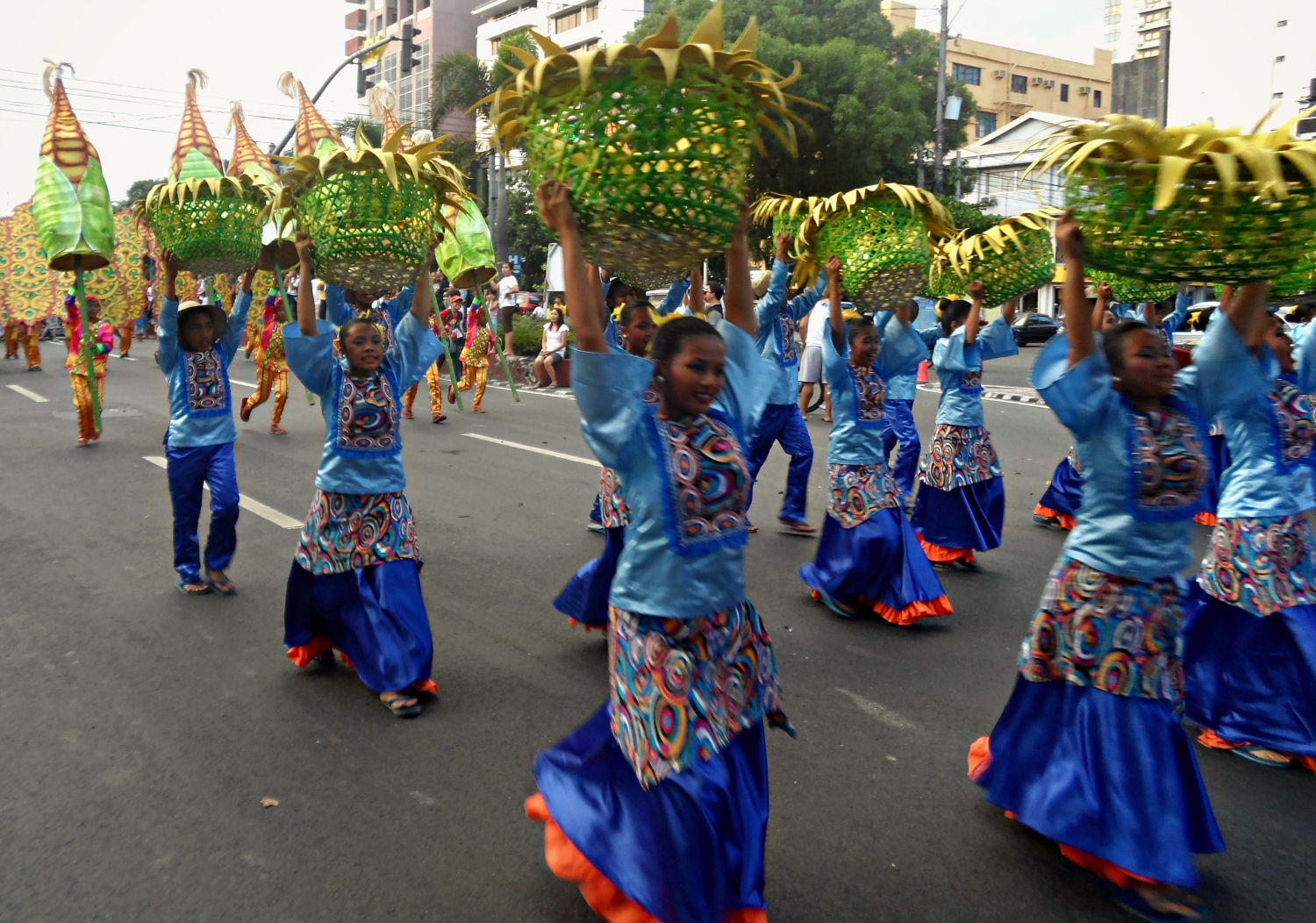On the Beaten Track
/Body-painted drummers from Iloilo City's Dinagyang Festival rehearse at Rizal Park before the Grand Parade on Roxas Boulevard (Photo by Migs Bassig)
The Aliwan Fiesta, which is derived from the Tagalog word that means “fun” or “entertainment,” is an annual three-day cultural event showcasing the different festivals in the Philippines, each representing a provincial town or city.
“The Fiesta is a quintessential Filipino way of celebration, giving a glimpse of the country’s diverse society, cultural heritage, and unparalleled natural bounties,” said Philippine tourism secretary Ramon Jimenez, Jr. in a statement. “It is one of the blocks upon which we built our being Filipino.”
Ang Tipulo Festival street dancers strut their stuff and pay homage to the rich cultural heritage of Antipolo. (Photo by Migs Bassig)
Intricately costumed young men and women from the Pasaka Festival in Tanauan, Leyte add to the explosion of color at Quirino Grandstand. (Photo by Migs Bassig)
This year (the Fiesta’s 11th), it gathered over 5,000 participants, 17 street dance groups (ranging from 60 to 100 dancers), 14 massive parade floats, and 18 young muses—“Aliwan Festival Queens”—at the center of the country’s contemporary, cultural and historical hub. Also known as the “Mother of All (Philippine) Fiestas,” Aliwan doubles as a venue for driving regional trade: A shopper’s bazaar is set up every year at the Cultural Center of the Philippines (CCP) complex, where tribal souvenirs, jewelry, arts and crafts, fruits and flowers, gourmet delicacies and local specialty products are sold to festival-goers.
The atmosphere is typically festive and celebratory. Colorful banners and buntings line the four-kilometer stretch from Quirino Grandstand in Rizal Park to the Aliw Theater near CCP. But Aliwan also happens to be an intensely competitive affair, with lots of cash (and bragging rights) at stake. This year, organizers from the CCP and the Manila Broadcasting Company awarded P100,000 ($2,426) to Miss Jamie Herrell, the top Aliwan Festival Queen, who represented Cebu’s Sinulog Festival. The P500,000 ($12,130) prize for best festival float went to the contingent from Alangalang province in Leyte for their intricately crafted Bahandilan Float. The group representing Iloilo City’s Dinagyang Festival took home a cool million for winning the Fiesta’s street dancing championship.
Dancers representing Zamboanga's Hermosa Festival (held in honor of Our Lady of the Pillar) prepare for their field demo. (Photo by Migs Bassig)
Meguyaya Festival dancers from Upi, Maguindanao perform their routine. (Photo by Migs Bassig)
I watched a bit of the dance routines at the Grandstand before joining the crowd of bystanders at the corner of U.N. Avenue and Roxas Boulevard. The entire scene, as the Fiesta website aptly described, was “grass-roots theatre at its best.” And it made a stage out of the pockets of park normally occupied by a small group of seniors doing outdoor tai chi, or the occasional sunglassed dog-walker. Choreographers, stylists and prop makers called and cheered in provincial dialects I couldn’t understand. Street vendors plied their trade in advertising howls, selling peanuts, cigarettes and mineral water. Tourists and photographers in Panama hats flanked the thousands of young Filipino men and women in costumes, jewelry and body and face paint. Rizal Park gave itself to an explosion of color, and as it did so—as it transformed into a rich, concentrated essence of 7,107 blessed islands—the drummers, inevitably, drummed. Dadadum, dadadum, dadadum.
Experiencing Aliwan Fiesta for the first time, I felt like I was being transported to multiple Philippine provinces in one sweeping afternoon: to a fruit-bearing farm in Central Luzon where the sweetest, yellowest mangoes grew; to a highland in the Cordilleras in the middle of the season of flowers blooming; to a southern Mindanao island where indigenous, Muslim and Christian populations converged; to a provincial city in the Visayas, the cradle of Christianity in the Philippines, where townsfolk burned with religious fervor for Jesus, Mary and the saints. It occurred to me: this is exactly the sort of magic that an event like Aliwan brings. It’s not just about fun or entertainment; it’s also about pride and identity. It takes you to places and times you’re unfamiliar with, but which you recognize as home. In the faces of others, no matter which part of the country they’re from, you see yourself. From the loud, frenetic pulsation of drums, you hear your own heartbeat.
What would the Philippines do without drums? I don’t know. But the silence would be deafening.
The contingent representing the Mango Festival in Zambales marches down Roxas Boulevard. (Photo by Migs Bassig)
Dinagyang Festival, represented by the Tribu Panayanon group from Iloilo City National High School, won the Aliwan Fiesta 2013 Street Dance Championship. (Photo by Migs Bassig)
Young muses—“Aliwan Festival Queens”—pose atop the parade float of Meguyaya Festival of Upi, Maguindanao. (Photo by Mig Bassig)
Migs Bassig, 28, has returned to Manila after living and working as a writer in Santiago, Chile. You can follow his blog at http://migsbassig.blogspot.com/.










